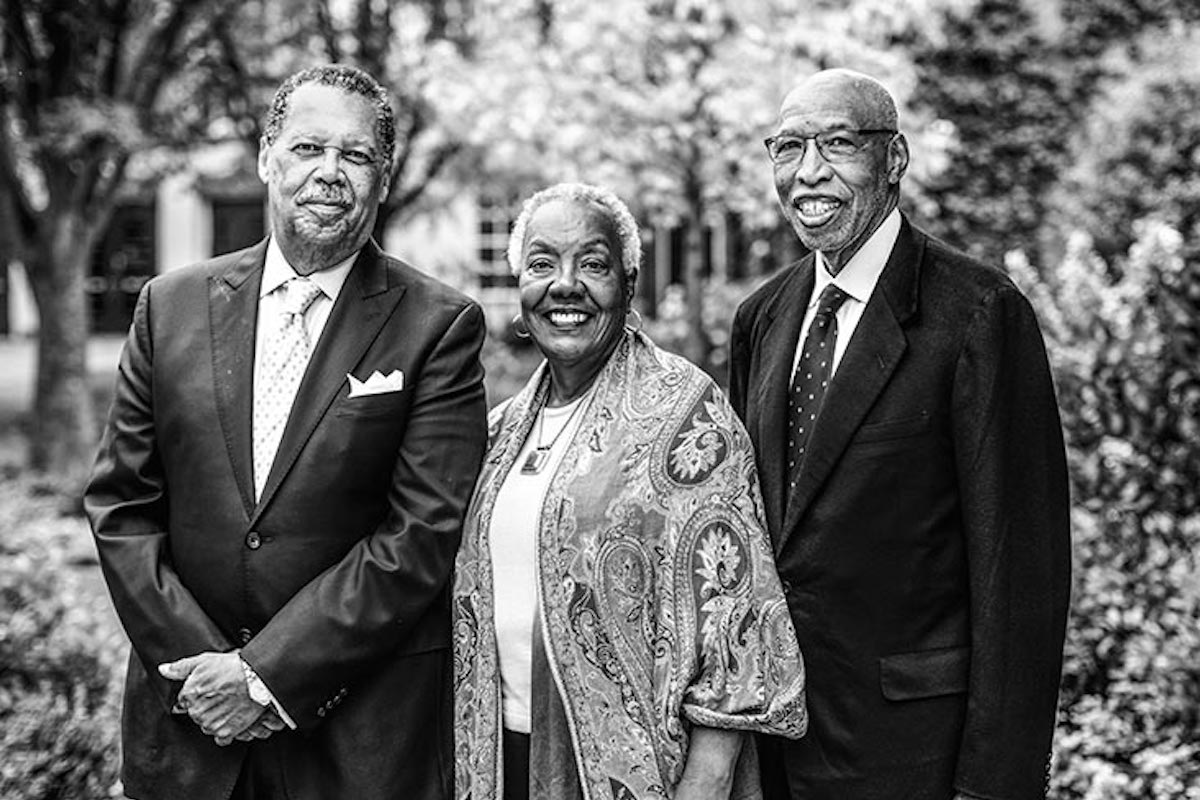Fifty years later: Ted Lewis, Lillian Lincoln Lambert, and Roy Willis, back on the HBS campus. Photo by Susan Young (Library of Congress), Featured Image

“We were just doing what needed to be done” | Harvard Business School
Read Time 2 min.
“We were just doing what needed to be done” | Harvard Business School
Fifty years later: Ted Lewis, Lillian Lincoln Lambert, and Roy Willis, back on the HBS campus. Photo by Susan Young (Library of Congress), Featured Image
[dropcap]Just[/dropcap] over 50 years ago, at the end of a summer that saw race riots across the United States as well as the confirmation of Thurgood Marshall as the first African American Supreme Court Justice, five African American students arrived at HBS. What they encountered—a predominantly white, male campus—seemed out of step for the times and the liberal Northeast. Their deep disappointment led to a resolve that catalyzed an increase in the number of black students at HBS, the hiring of black faculty members, and the creation of more socially relevant electives. By establishing the African-American Student Union (AASU) in 1968, the five founders also hoped to support incoming black students and enhance their educational experience. Little did they know that their call for change would result in a legacy that would have lasting impact at the School. [mc4wp_form id=”6042″]
 FOUR FOUNDERS From left: Clifford Darden, Lillian Lincoln Lambert, Theodore Lewis, and Leroy Willis, Photos courtesy of HBS Archives
FOUR FOUNDERS From left: Clifford Darden, Lillian Lincoln Lambert, Theodore Lewis, and Leroy Willis, Photos courtesy of HBS Archives Mourners stream through Harvard Yard following Dr. Martin Luther King Jr.’s assassination in April 1968., Annual Report, 1968
Mourners stream through Harvard Yard following Dr. Martin Luther King Jr.’s assassination in April 1968., Annual Report, 1968This year HBS is celebrating the 50th anniversary of the founding of the AASU by Clifford E. “Clif” Darden (MBA 1969, DBA 1982), Lillian Lincoln Lambert (MBA 1969), E. Theodore “Ted” Lewis Jr. (MBA 1969), George R. “Bob” Price (MBA 1970), and A. Leroy “Roy” Willis (MBA 1969). In commemoration of this milestone, four of AASU’s founders (Price died in 2012) reflect on their time at the School, the creation of the organization, and the importance of having a student body that mirrors the real world.

You must be logged in to post a comment.